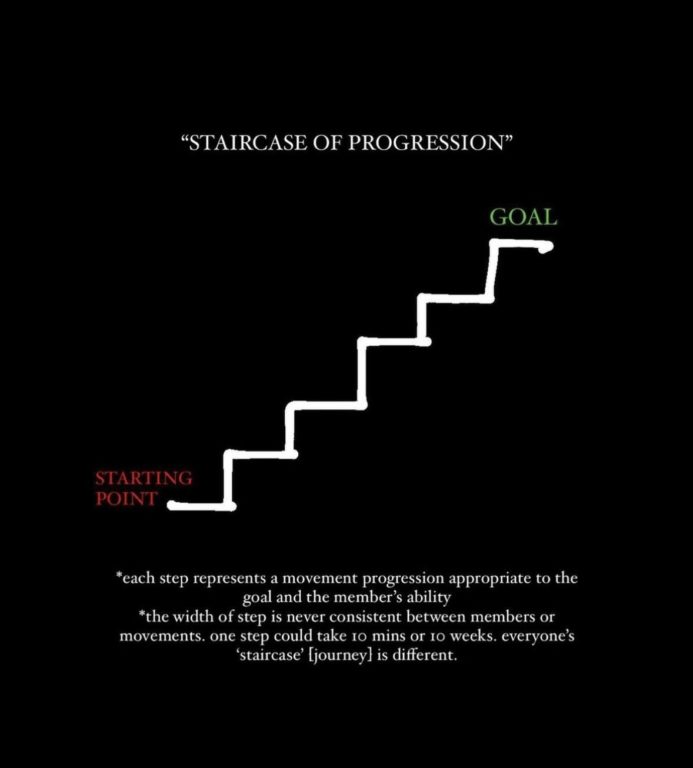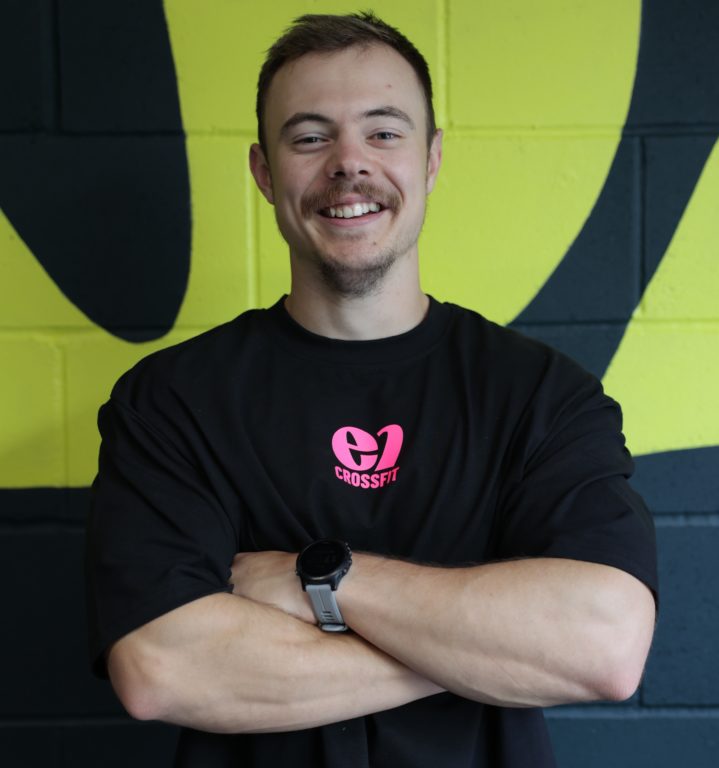The true beauty of CrossFit lies within its scalability. No matter your fitness level, the CrossFit gym is the best place to be, surrounded by passionate and encouraging members, and knowledgeable and enthusiastic coaches. Whoever you are, whatever your athletic ability, you will be championed as an athlete.
Another truly unique aspect of CrossFit is its varied nature. It exposes ordinary people to many technically challenging movements in a safe and controlled environment. This is achieved through precise and calculated scaling specific to the member standing before you.
As coaches, we are responsible for scaling movements appropriately for our members and explaining why we are scaling them. Too often, it is easy to get distracted by the best in our sport demonstrating ridiculous feats of human performance and thinking, “I’ll never be able to do that.”
Over the past few years, I’ve matured as a coach, shifting my focus from merely teaching movement progressions to inspiring confidence and the pursuit of ambitious goals. I’m passionate about the belief that every member — regardless of age or fitness level — can master technical and demanding skills … if they want.
Sometimes, this even means I must believe in them enough for both of us while delivering coaching cues and drills that instill belief and show them how capable they really are. As coaches, we understand there are particular prerequisites for specific skills and movements, often strength-related. These requirements just need some time to develop, so keeping our members engaged in the process with their eyes firmly set on the goal is an essential skill for a coach to possess.
But as a coach, where do you even begin to take someone from, “I’ll never be able to do X” to, “I can’t do it yet, but one day I will”?
 For me, I began to explain everything we did in the gym as a staircase. This slowly evolved into the “Staircase of Progression.” This metaphor was mainly a tool for beginners to visualize how scaling would help them reach their goals. You can promptly eradicate any stigma attached to scaling by proper explanation. Scaling is NOT making a movement easier; it is making it MORE level-appropriate. Everyone starts their CrossFit journey from a different place, emotionally and physically. And each step forward will look different for them than the person next to them on the gym floor. One is not better than the other — just different.
For me, I began to explain everything we did in the gym as a staircase. This slowly evolved into the “Staircase of Progression.” This metaphor was mainly a tool for beginners to visualize how scaling would help them reach their goals. You can promptly eradicate any stigma attached to scaling by proper explanation. Scaling is NOT making a movement easier; it is making it MORE level-appropriate. Everyone starts their CrossFit journey from a different place, emotionally and physically. And each step forward will look different for them than the person next to them on the gym floor. One is not better than the other — just different.
Using the bar muscle-up as an example, an experienced athlete might practice transitional drills on a low bar or do bar muscle-up negatives, while a beginner might start with ring rows and band-assisted push-ups or dips.
No matter the choice of movement, effective communication is key. Always explain how an exercise will help them progress, and don’t leave them wondering why they’re doing it. Creating buy-in on progressions helps members see that each step brings them closer to mastering the movement. To do this, you need to fully understand the intent behind every part of the workout, from the goals of each warm-up movement to loading demands and time estimates. It’s not enough to follow a program; you must implement it with purpose and understanding.
As a coach, your role is to inspire athletes to believe in their ability to master difficult movements and to provide safe, motivational progressions. For those with limitations, set challenging yet achievable goals. With experience, you’ll recognize and encourage members’ strengths, suggesting advanced movements like bar muscle-ups when appropriate. Timing is key: share insights at the right moment to avoid overwhelming the client, and to build their confidence and trust in you.
When I coach, I refer to this as the “athlete mentality.” Put yourself in the shoes of a top-level athlete, whether in the sport of CrossFit or another. How would an athlete approach a new challenge? They wouldn’t immediately admit defeat; they would problem-solve and learn to adapt to overcome the new challenge. Through this problem-solving process, they would try to identify the discrepancies preventing them from achieving the goal or skill they are working toward. This is what coaching is. How can you work with your members to problem-solve and identify the areas they need to improve to unlock the next step in their progression?
As a CrossFit coach, you’re not supposed to be a cheerleader; you’re a catalyst and guide. By mastering your craft and leading by example, you can instill confidence and push athletes beyond their mental and physical limits. So, when you hear, “I can’t” in your class, use the moment to remind them of the “athlete mentality” and show them they absolutely can!
about the author
 Charles Ingell has been doing CrossFit since 2016 and coaching since 2017. After a fulfilling four years as the proud owner of CrossFit Vauxhall in London, U.K., he sold the gym to explore his next adventure within the world of CrossFit. It was at CrossFit Vauxhall where Ingellhoned his craft as a coach, developed many fantastic relationships, and became a CF-L3. He now coaches at London’s newest CrossFit affiliate, E1 CrossFit, working with a new group of people, many of whom are brand new to CrossFit, which offers an amazing challenge. Ingell is passionate about helping other coaches refine their craft and hopes to pursue this, along with continuing education long into the future.
Charles Ingell has been doing CrossFit since 2016 and coaching since 2017. After a fulfilling four years as the proud owner of CrossFit Vauxhall in London, U.K., he sold the gym to explore his next adventure within the world of CrossFit. It was at CrossFit Vauxhall where Ingellhoned his craft as a coach, developed many fantastic relationships, and became a CF-L3. He now coaches at London’s newest CrossFit affiliate, E1 CrossFit, working with a new group of people, many of whom are brand new to CrossFit, which offers an amazing challenge. Ingell is passionate about helping other coaches refine their craft and hopes to pursue this, along with continuing education long into the future.
more on the athlete mentality
Comments on The Value of the “Athlete Mentality”
Good stuff
Great
The Value of the “Athlete Mentality”
2